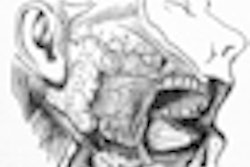
A team of U.S. researchers has developed a screening questionnaire designed to enable dental practitioners and other healthcare professionals to quickly and cost-effectively identify patients with pain-related temporomandibular disorders (TMDs; Journal of the American Dental Association, October 2011, Vol. 142:10, pp. 1183-1191).
Early identification of TMD for these patients would have a significant effect on diagnosis, treatment, and prognosis, the authors noted. But existing screening methods for TMDs have limitations, including the following:
- Psychometric properties
- Diagnostic statistics
- Lack of representative population
- Multidimensionality of the items
- Lack or variability of reference standard diagnosis
"These shortcomings motivated us to develop the new instrument," study co-author Yoly Gonzalez, DDS, an assistant professor in the department of oral diagnostic sciences at the University at Buffalo School of Dental Medicine, told DrBicuspid.com. "As an educator, I saw the necessity of developing an instrument based on data and strong methodology."
“I saw the necessity of developing an instrument based on data and strong methodology.”
— Yoly Gonzalez, DDS
The researchers used psychometric methods for item selection and developed two versions of the same questionnaire: one with three items, and the other with six items. They then evaluated the validity of both versions among 504 study participants.
The questionnaire queried patients about how long any pain in their jaw or temple area lasted in the last 30 days, or if they had any pain or stiffness in their jaw on awakening in the same time period. It also included queries about whether various activities, such as chewing hard, affected the pain.
The three-item screener is intended to be a cost- and time-effective tool for use in population-based studies and other research applications in which aggregate group statistics are an acceptable outcome, the study authors noted. The six-item screener was developed to enhance the reliability and precision of the short version for use in clinical settings.
The authors found that both versions had a sensitivity of 99% and a specificity of 97% for correct classification of the presence or absence of TMDs.
"These results are supported with very solid and current methods for developing self-report instruments," Dr. Gonzalez said.
Both versions had excellent validity when judged against a reference standard diagnosis with the expanded Research Diagnostic Criteria for TMD protocol, the authors noted.
"With use of appropriate psychometric methodology, the selected items exhibited excellent content validity," the authors concluded. "The excellent levels of reliability, sensitivity, and specificity demonstrate the validity and usefulness of this instrument."
To reach a definitive diagnosis, however, the clinician using either version must perform a comprehensive pain assessment, including interview and clinical examination, the authors noted.
The intended uses of this instrument are to identify patients who require further clinical evaluation and provide a standardized screening instrument for research purposes. As for clinical use, the responses from the screener can be used as part of the diagnostic process.
The brevity of this instrument allows for its routine use in clinical and research settings, the authors noted.
"This instrument can be used by dentists, as well as by other healthcare professionals, to help them identify TMD conditions ... with an excellent level of sensitivity and specificity and great efficiency," Dr. Gonzalez concluded.



















